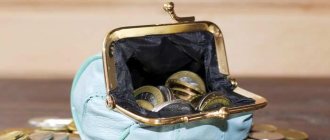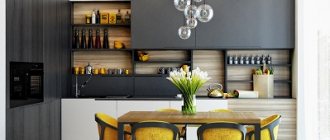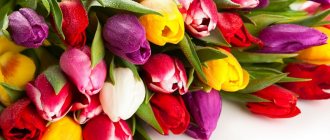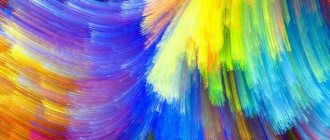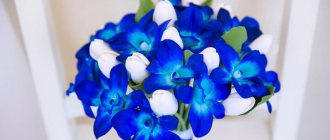Color is one of the most powerful tools in a designer's toolkit. With its help you can attract attention, create a certain mood, influence emotions, perception and behavior.
Did you know that among the reasons that motivate customers to purchase a certain product, 90% are due to color? Or that color magazine ads are 26% more likely to be noticed than black and white ones?
The conclusion is clear: using the right color will help you achieve success. But a natural question immediately arises: how to choose the right color? To answer this, you will have to analyze several important aspects:
- color associations
- differences in color perception between men and women
- problems associated with color vision impairment.
Red, orange, yellow
Red – importance, danger, attention.
Red is used in advertising products as an incentive to action. It makes a person want to do something. If we talk about the advertised product, then this will be a desire to buy. It is the color red that is called an advertiser’s best friend, as it allows you to quickly attract attention. But when using it, it is important to consider the scope of the company’s activities. For example, advertising a dental clinic in red colors would not be entirely appropriate.
Orange – optimism, a surge of strength and confidence.
Orange puts a person in an optimistic mood, creates a feeling of inner balance and harmony. It is also worth considering that it causes appetite. In ancient times, orange was considered the color of health, so it is optimal for advertising medicines and services in the field of education or health care. But orange is not associated with elitism, so a branded product in advertising with this color will look too affordable.
Yellow – sun, happiness, attention.
The color yellow is positioned in advertising as motivating communication. It reflects openness and sociability, has a balancing effect, helps reduce mental anxiety, and also “endows” the object with intelligence. This makes yellow an ideal color for advertising high-tech products, PR agencies, travel and advertising companies.
Color in marketing and business
The role of color in creating a corporate identity
When developing a brand philosophy, color takes center stage among other factors. Every color we see directly or indirectly implies something, and this helps influence the perception of a particular brand. Some colors go beyond individual brands, symbolizing entire industries, for example, blue for the tourism business, green for healthy eating, red for fast food.
There are no clear rules for choosing colors when developing a corporate identity. Some use colors that are familiar to their industry, while others, on the contrary, prefer to go against tradition, believing that this helps to attract attention more effectively. For example, Virgin America decided to change the traditional concept when developing its website and application. And although this may not be exactly what users expect from an airline website, it nevertheless attracts attention.
There's not even a hint of blue in the Virgin America iOS app.
Thus, an unexpected color choice can be an effective technique to attract users' attention to your company.
Color and Conversion Rate Optimization
How can you use knowledge of color theory and psychology to encourage people to click? Choosing the color of your call to action (CTA) button is one of the oldest aspects of the conversion versus optimization debate. For every person who argues that red is the best color for a button because it attracts the most attention, there is someone who argues that green is the best color because it is associated with safety and encourages action.
HubSpot presented the results of its marketing research (A/B test), which shows how the choice of color for the call-to-action button affects the number of registered users.
A/B testing is the most effective and frequently used marketing research method.
Although it was initially expected that the green button would perform better, test results showed that the red button received 21% more clicks. At the same time, HubSpot warned its users that the test results were somewhat subjective - perhaps the audience preferred red because it was the only saturated color on the site page.
The color of a button in itself does not affect its absolute effectiveness - what works well on one site may be ineffective on another. The claim that one color converts better than another is false because there is no universal best color. However, there are still some rules based on practical experience that help you effectively use color to your advantage. One of them is the use of a psychological principle known as the “isolation effect.” According to this principle, people remember better an object that stands out from the rest “like an eyesore.”
For example, if your website or app has a lot of green in its design, users will likely not pay attention to the green button, even though A/B test data has proven its effectiveness at another company.
Evernote web service. Their “It's Free” CTA button is buried because it blends in with the background. It gets lost on the page and users don't notice it.
Sometimes you need to change the visual hierarchy of colors on a page to highlight your call to action button. Contrast plays a very important role - if the color of the button does not attract the attention of a potential client, then there will be no registrations/sales.
A call to action (CTA) button really attracts users' attention when it contrasts in color with the rest of the page elements.
Color and usability
Design involves not only beautiful design, but also functionality and usability - perhaps the two most important principles for the work of any UX designer.
Color is a tool that helps direct the eye to the desired objects. Choosing the right color when designing an interface not only attracts users, but also improves the efficiency of the user interface.
Limit the number of colors
When using different colors in your design, you should strive for balance. The more colors you use, the harder it is to achieve balance. Using too many colors is a common mistake developers make. They may be trying to influence users in this way and convey as much information as possible, but this can be very confusing for people visiting the site.
No matter what color shades you use, too many colors create an unfortunate visual effect.
Interior designers follow a simple rule of 60–30–10, which also works well when designing websites. This timeless technique will help you choose a balanced color scheme: 60% should be the dominant color, 30% the secondary color and 10% the accent color. This ratio guarantees color balance and a comfortable transition of the gaze from one object to another.
The formula 60% + 30% + 10% is the key to balancing the colors used.
Availability of color perception
People perceive colors differently. Approximately 8% of all men and 0.5% of all women suffer from color blindness to some degree. The combination of red and green suffers most from color vision impairment. The only way to avoid problems is to try not to use this color combination.
Many colorblind people have difficulty distinguishing red from green.
Let's take a common situation as an example. Have you ever received a message that a form was filled out incorrectly - something like “Fields marked in red are required”? While this is not a big problem for users with normal vision, people who are colorblind may find this message upsetting.
Website developers use only two colors to fill out forms: red and green. But colorblind people cannot distinguish between the fields highlighted by these colors.
As stated in the W3C guidelines, colors should not be used as the sole visual tool for the following purposes: conveying information, prompting action and response, or highlighting a visual element. Following these recommendations, site developers should pay attention to some points: the response message about errors should be more informative, for example, like this: “The email address you entered is not available”; or perhaps you should add an icon next to the fill field to attract the user's attention.
Additional visual cues and built-in error checking help highlight an incorrectly filled field.
Are there a few ways you can test your UI for accessibility?
- The WebAIM service will help you check color combinations.
- Using the Adobe Photoshop graphic editor will help you correct images using Color Universal Design. This will ensure accessibility of graphic information for people with color vision impairment, including color blindness.
Light blue, blue, green, purple
Green – development, success, environmental friendliness.
Green color softens everything and reduces the severity of emotions. Its main effect is relaxing. Green is associated with nature, so it is relevant for health centers, dental clinics, veterinary hospitals, and environmental protection companies.
Blue – peace, feelings, harmony.
The color blue in advertising is used to set a person up for something sublime. It reflects friendliness and kinship of souls. Blue is also the color of peace and harmony. Therefore, it is suitable for all areas related to relationships between people.
Blue – trust, comfort, relaxation.
If you need to add more concentration, you should introduce blue into your advertising. It helps you not to get distracted by small things and directs your attention to something specific. It is very important that blue is never associated with negativity, which distinguishes it from red. In addition, it is very loved by men, who use variations on the blue theme much more often than women.
Purple – elitism, creativity, spirituality.
The color purple is used in advertising to create the effect of concentration. It helps a person to distract from unimportant trifles and concentrate on the main thing. Violet also stimulates solving creative problems. Therefore, if you want to emphasize the creativity of a product, you should use purple. But we must remember that men do not like him too much.
What the Research Says
The perception of color depends on personal preferences, upbringing and cultural characteristics of a person, but when it comes to shopping and interaction with a brand, there are also universal points:
- for 80% of users, color affects brand recognition;
- 90% of customers decide to buy based only on the color of the product.
Color helps a brand stand out and be remembered from its competitors. It awakens memories and affects a person’s emotional state. And each in his own way. Let's figure out what email marketers can do about it.
White, black and gray
Black – strength, grace, sophistication.
A special place in the field of advertising is occupied by white, gray and black colors. The latter is actively used most often in fonts and tables. This is because black is associated with loneliness. But at the same time it reflects exclusivity and reliability. Therefore, a product advertised in this color does not require the use of other shades. You only need to consider the type of product being advertised. Strict and formal black is suitable for executive cars or an expensive tuxedo.
White – purity, health, chastity.
The color white in advertising creates the opposite feeling. It reflects openness and does not carry any unpleasant feelings. But the use of white in advertising does not allow us to make any accents and set priorities. It is used to create a neutral effect when needed in promotional products.
Gray – formality, professionalism, neutrality.
The use of gray in advertising also has some limitations, since it acts as a symbol of neutrality. At the same time, gray allows you to create a feeling of formality. This makes the color ideal for creating a background on which there will be elements of other colors that are well shaded by gray.
Yellow - we revive and lure
The sun and happiness are the first associations that come to mind. Rich yellow expresses joy, optimism and spiritual lightness, while darker shades are both calming and invigorating.
Yellow encourages impulsive shoppers, so use it in your flash sale or clearance emails. Add yellow if you want to cheer up your subscribers.
The Alice and Olivia newsletter is bright yellow, but it doesn't cause alarm or fear. On the contrary, the connection between the online store’s promotion and the legendary The Beatles and their hit Yellow Submarine comes to the surface:
Making advertising taking into account psychology
The Altea advertising agency in Tver has been working in the field of advertising for a long time and regularly creates advertising layouts for a wide variety of products. You can contact us not only with a ready-made template. These can be your ideas and simple sketches, which we will finalize taking into account the advertised product.
We have various services, including advertising printing and production of interior advertising of various types and complexity. When choosing a color for a design, we take into account not only the meanings of different shades, but also the target audience, its age, interests and gender. This approach allows you to create the most effective advertising that will show really good results in attracting potential customers.
Blue - we gain trust
The color of reliability. Tones and shades of blue are associated with safety and tranquility, instilling confidence and even increasing productivity.
Use blue in your newsletter to increase the company's credibility in the eyes of the subscriber, and blue to enhance the feeling of purity and peace. But dilute the color scheme of the letter with other shades so as not to inadvertently drive a person into depression.
The dermatological brand La Roche Posay cares about the health of girls’ skin, so the company’s logo and newsletters are made in rich blue colors, symbolizing purity.
Green - we encourage you to take care of nature
This color symbolizes nature, and nature is harmony, vitality and a new beginning. Dark shades are associated with wealth and stability, while light shades are associated with kindness and compassion.
Focus on green if the company's corporate policy is related to environmental friendliness. Tentree is an eco-friendly clothing brand. When the company reminds subscribers about the importance of protecting the environment, the emails are filled with rich colors of fresh greenery.
Orange color indicates a low price category
Marketers unanimously revealed an interesting and unusual fact: the color orange improves mood, invigorates, but is associated with cheapness. An excess of orange in the interior of premium restaurants will lead to a decrease in the prestige of the establishment and the loss of some customers. For a person on a subconscious level, the color orange:
- Incomparable with luxury and high cost. Suitable for modern fast food establishments, fast foods, public canteens. Also used to decorate restaurants and cafes of low and medium price categories, specializing in business lunches, set lunches and dinners.
- Stimulates appetite. However, when decorating the interior of a room, it is important to remember that orange can only be used as an accent. An excess of this color, especially indoors, causes people to become irritated and want to leave the establishment as quickly as possible.
- Improves mood. This feature is used in the design of sporting goods stores, separate shelves with sports nutrition, gyms and bars. This color is appropriate where it is necessary to achieve a cheerful, relaxed atmosphere.
- Attracts attention. The wavelength of orange radiation is second only to red. Compared to other colors, orange is clearly visible from afar, but it predisposes the buyer to a low price range.
The orange color in the façade design shows that the establishment belongs to a low price category and attracts customers who want to have an inexpensive meal.
Black color - complement other colors
This color signifies sophistication, control and independence. Since black is the absence of any color, it correlates with secrecy, individuality and restraint.
Negative meanings of black include evil, sadness, depression and even death. So in your mailings, dilute it with other colors. Send intense black emails only to specific audiences or on special occasions. The Pull&Bear newsletter is dedicated to Black Friday and the chosen color corresponds to the occasion.
White color - balancing the elements of the letter
Traditionally it is associated with purity and innocence. White is a balanced combination of all the colors of the palette, so it can both charge you with vigor and optimism, and calm you down and drive away fears. But too much white can make people feel lonely and empty.
In newsletters, this color is most often used as a background, since it highlights the rest of the letter elements and matches all colors. Look at the newsletter from Cuyana - the white background gives a lightness, making the design look neat and restrained.
Brown color in interior and exterior decoration
Thanks to in-depth analysis and experiments, Japanese marketers consider all shades of brown to be universal for decorating premises and facades of food establishments. From the point of view of experts, brown color:
- Has a positive psychological effect . In a room, brown colors and shades create a special atmosphere where you can relax, calm down, and feel a sense of security and stability. It is not surprising that this color not only makes people balanced and emotionally restrained, but also promotes psychological relief after an anxious day at work, crowded conditions, noise and intense emotions. Decorating the restaurant in beige and brown tones promotes the visitor’s mood “I want to come here again.”
- Has a rich palette of shades . Classic brown color seems downright boring to many. However, if you look at the spectral range, you can see many natural shades: caramel, sand, walnut, chocolate, chestnut, ivory, cream, brick, champagne, café au lait... And this is just the beginning of the list.
- Practical . Undoubtedly, keeping brown furniture clean is much easier than regularly cleaning snow-white sofas or polishing the glossy surface of fashionable decor and shiny accessories.
- Easy to combine. The entire diverse palette of brown colors fits well with each other and easily combines absolutely all elements of the facade and interior of the room into a harmonious ensemble: floor, ceiling, walls, furniture and decorative accessories.
- We love people of any age . Shades of brown can be used in national and family restaurants, cafes, karaoke bars, fast foods, vegetarian and dietary establishments. It fits both a classic or ethnic interior and the design of a modern Internet cafe.
- Increases appetite. All shades of the brown spectrum are organically combined with a variety of colors of natural products, emphasizing the rich tone of berries and fruits, making dishes and drinks seem delicious.
All shades of brown are ideal for decorating external shop windows and interiors of almost all food establishments.
The influence of color palette on the sensation of temperature
Colors are divided into those that warm and those that give a feeling of coolness. Depending on the color, a person feels temperature with a difference of 3 degrees.
The order of arrangement of colors in accordance with the associations of the heat produced:
Red -> orange -> yellow -> green -> purple -> black -> blue
In order to attract customers, it is recommended to decorate store signs and interiors in warm colors in winter, and in cold colors in summer. To ensure that traffic does not change with the seasons, in Japan, when designing signs for shops, restaurants and cafes, cold and warm colors are combined.
The influence of color on weight perception
It has been scientifically proven that identical objects, but painted in different colors, visually differ in weight.
Scientists conducted an experiment: boxes of the same weight (100 g) and size were painted in different colors. The subjects were asked to determine their approximate weight. When asked which box was the lightest, all subjects answered that it was white. And the black color was visually felt almost twice as heavy as white.
In the experiment described, the sensation of weight was distributed as follows:
- white box – 100 g.
- yellow box – 113 g.
- yellow-green box – 132 g.
- blue box – 152 g.
- red box – 176 g.
- purple box – 184 g.
- black box – 187 g.
How interior color scheme attracts customers and increases sales
Research by scientists has revealed that 83% of information a person perceives through the organs of vision, 80% of which is color.
That is, we perceive almost 70% of information about the world around us through a variety of color palettes. Marketers, turning to scientific research, have named eight primary colors, using which you can quietly influence the behavioral factor and purchasing power of customers. Correct color design of the interior and display windows in the restaurant business helps attract customers and increases sales. The main thing is to identify the target audience, formulate objectives and set a goal. And then proceed to decorating the interior of the room, advertising signs, facade and external display windows.


